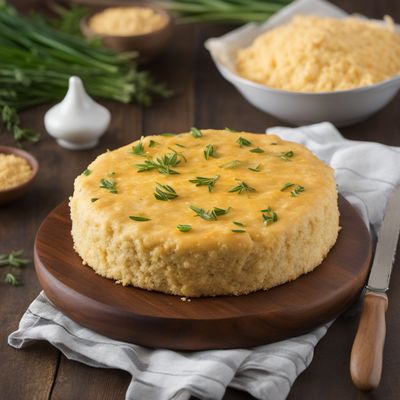
Ingredient
Millet groats
Millet Groats: A Nutritious Ancient Grain
Millet groats are small, round grains with a pale yellow color. They have a mild and slightly nutty flavor, similar to corn or quinoa. The texture of cooked millet groats is fluffy and light, with a slight chewiness. These grains are highly nutritious, packed with essential vitamins, minerals, and dietary fiber.
Origins and history
Millet has a long history of cultivation, dating back to ancient times. It was one of the first domesticated crops and has been a staple food in many cultures, particularly in Africa and Asia. Millet groats were commonly used in traditional dishes and porridges. Today, millet is still widely consumed in these regions and has gained popularity as a gluten-free grain alternative in Western countries.
Nutritional information
Millet groats are a nutritional powerhouse, rich in essential nutrients such as magnesium, phosphorus, and manganese. They are also a good source of dietary fiber and contain beneficial antioxidants. Additionally, millet groats are gluten-free, making them suitable for individuals with gluten sensitivities or celiac disease.
Allergens
Millet groats are naturally gluten-free and do not contain any known allergens. However, cross-contamination may occur during processing or packaging, so individuals with severe gluten allergies should look for certified gluten-free millet groats.
How to select
When selecting millet groats, look for grains that are clean, dry, and free from any signs of moisture or insect damage. Opt for organic or non-GMO options if available. Additionally, consider the intended use, as some varieties may be better suited for porridges, while others are ideal for pilafs or salads.
Storage recommendations
To maintain the freshness and quality of millet groats, store them in an airtight container in a cool, dry place away from direct sunlight. Proper storage can help prevent moisture absorption and prolong their shelf life. If stored correctly, millet groats can last for up to a year.
How to produce
Millet is a hardy crop that can be grown in various climates, from tropical to temperate regions. It requires well-drained soil and full sun exposure. As an amateur, you can grow millet in your garden or even in containers. However, keep in mind that millet requires a longer growing season compared to other grains.
Preparation tips
Millet groats can be cooked and used as a substitute for rice or couscous. They can be boiled, steamed, or simmered to achieve the desired texture. Millet groats are commonly used in pilafs, salads, and porridges. They can also be ground into flour and used in baking or as a thickening agent in soups and stews.
Substitutions
Quinoa, amaranth, or buckwheat can be used as substitutes for millet groats. These grains offer similar nutritional profiles and can be cooked and used in similar ways.
Culinary uses
Millet groats are commonly used in various cuisines around the world. They are prevalent in African, Asian, and Indian cuisines, where they are incorporated into traditional dishes such as porridges, pilafs, and flatbreads. Millet groats are also gaining popularity in Western countries as a gluten-free grain alternative.
Availability
Millet groats are commonly available in Africa, Asia, and specialty health food stores in Western countries. They can also be purchased online from various retailers.
More ingredients from this category

Bulgur
"The Nutrient-Rich Grain: Bulgur - A Staple in Middle Eastern Cuisine"

Wheat groats
Versatile Whole Grain

Buckwheat groats
The Nutritional Powerhouse: Buckwheat Groats

Barley groats
The Versatile Grain: Barley Groats

Rye groats
The Nutty Grain: Rye Groats

Oat groats
The Wholesome Grain Powerhouse
Recipes using Millet groats » Browse all

Ngalakh Delight
Divine Delicacy: Ngalakh - A Senegalese Sweet Sensation

Djerma-inspired Sammarinese Delight
Savory Millet and Vegetable Stew with a Sammarinese Twist

Lowcountry Shrimp and Grits Ragù
Savory Southern Delight: Lowcountry Shrimp and Grits Ragù

Soulful Southern Breakfast
Soulful Sunrise: A Southern Twist on the English Breakfast

Creamy Millet Porridge with Coconut Milk
Coconut-infused Millet Delight

Orouk with a Burundian Twist
Spiced Millet Porridge: A Burundian Delight

Ghanaian-Inspired Krupnik Soup
Savory Millet and Vegetable Soup with Ghanaian Flair

Creamy Millet Porridge with Coconut and Spices
Coconut-Spiced Millet Porridge: A Creamy Delight from South Sudan

Malian-Inspired Subanik
Savory Millet and Vegetable Stew: A Taste of Mali

North Dakota Millet Cake
Savory Millet Delight: A Taste of North Dakota

Chadian-style Sevillana Salad
Savory Fusion: Chadian-style Sevillana Salad

Jumiles Tacos
Zesty Jumiles Tacos: A Flavorful Twist on Mexican Cuisine